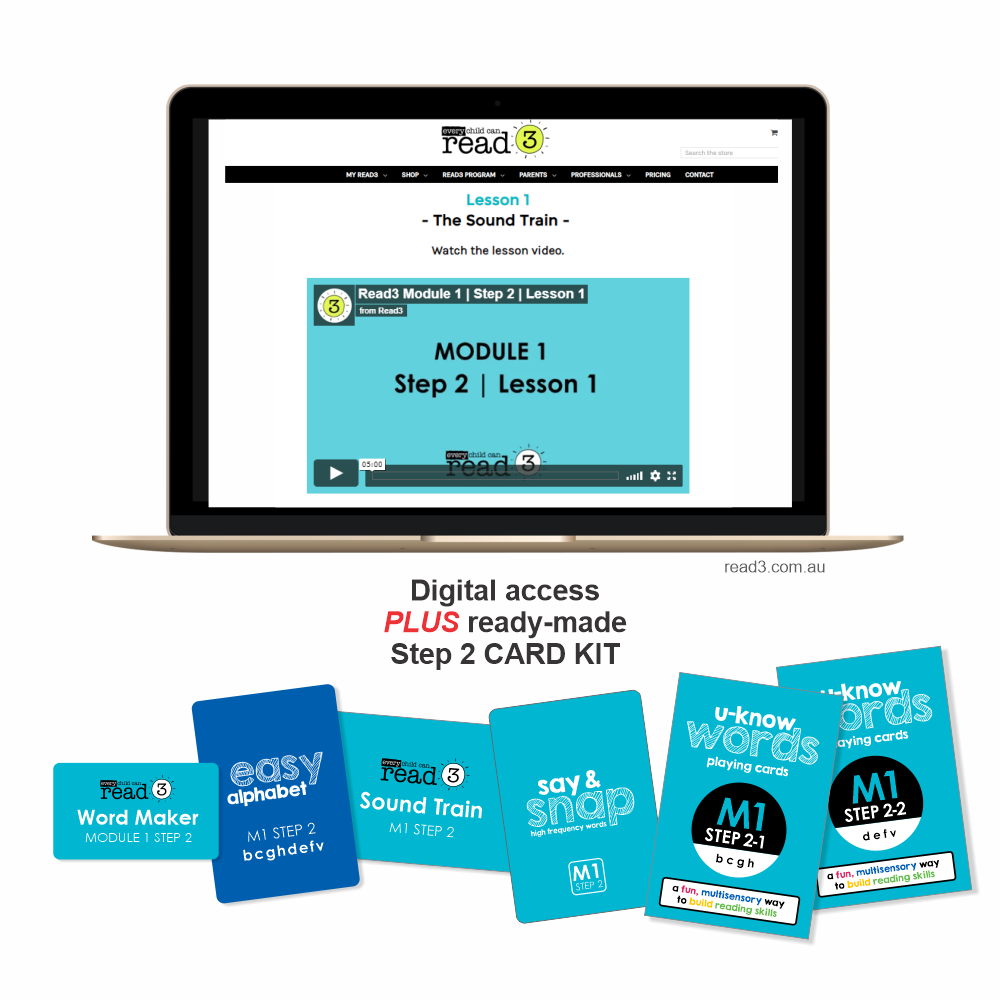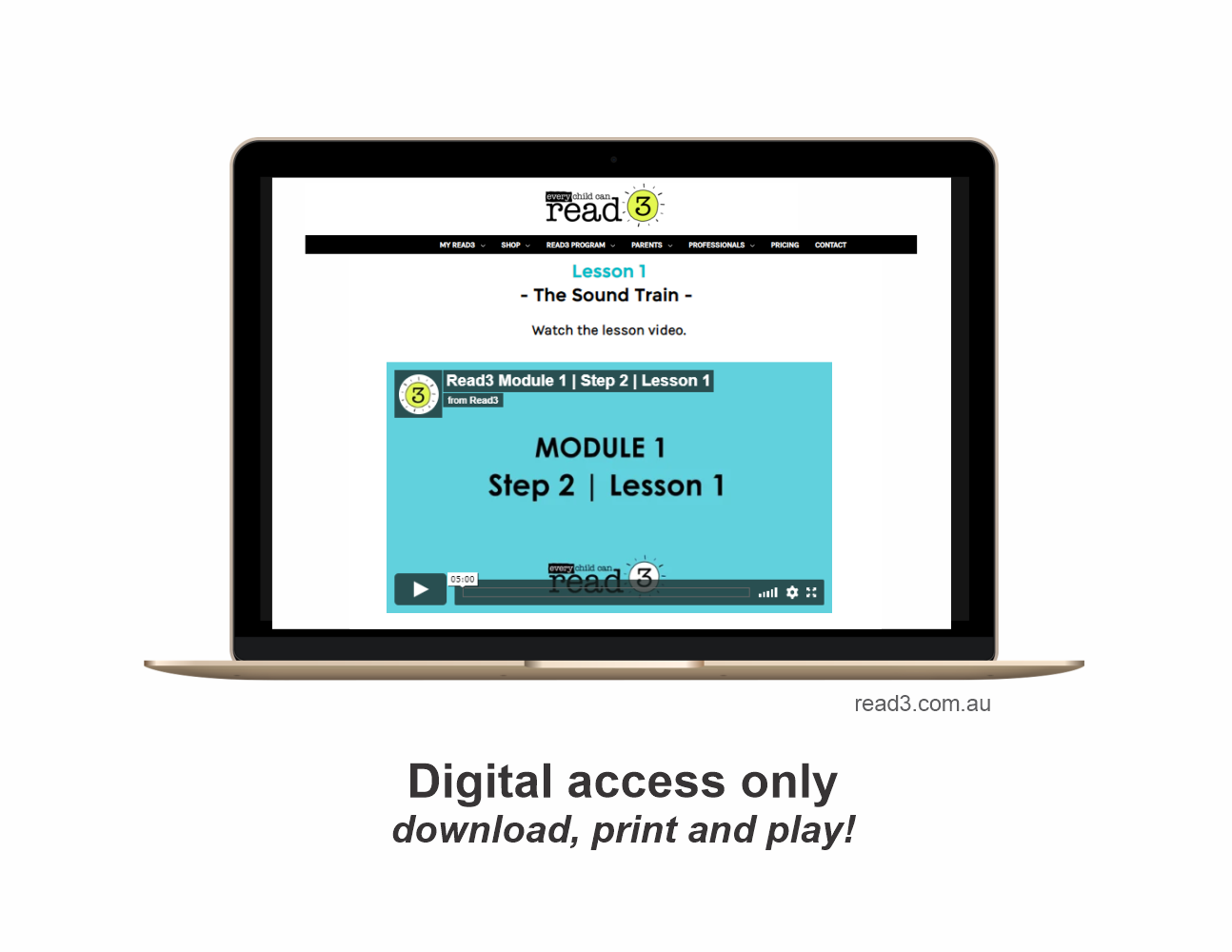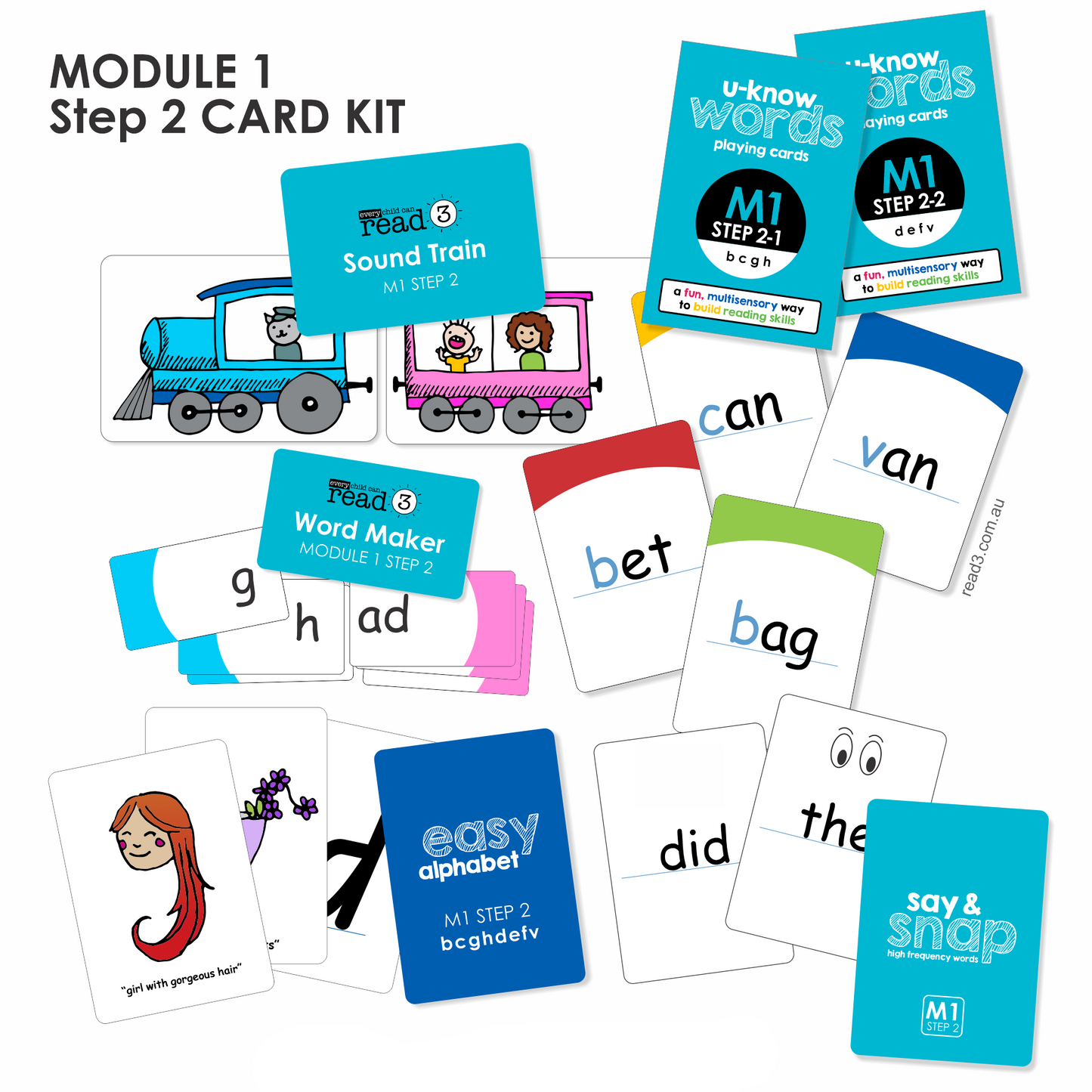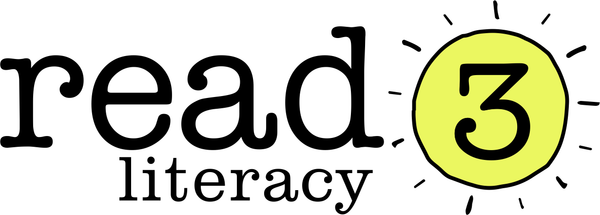Read3 literacy intervention program | Module 1 | STEP 2 | Parent
Read3 literacy intervention program | Module 1 | STEP 2 | Parent
Couldn't load pickup availability
Module 1 | Step 2 introduces eight new letters - b, c, g, h then d, e, f, v - and works to strengthen your child's reading circuit using a range of unique strategies and simple, short words. We will also introduce your child to high-frequency words that follow spelling patterns learned so far. To do this we use a systematic, integrated learning approach and fun, multi-sensory activities and games.
The pace of learning is different for each child, but it is anticipated Step 2 will take at least 3 weeks to master. For reading outcomes, a minimum of 5 sessions per week (20 minutes per session) is recommended. Children should then apply this learning for an additional 10 minutes a day, and a curated list of decodable readers, computer games and other resources is provided. Progress should be monitored daily to determine when your child is ready to move to the next step.
IMPORTANT: By purchasing this product you agree to our Terms of Service.
What you get in Step 2
Step 2 includes online access to:
- 2 lesson videos where experienced speech pathologist Robyn Monaghan teaches you key concepts and strategies
- easy to follow session practice guide
- 23 different activities/games
- digital copies of CARD KIT contents
- instructions and scripted lessons
- downloadable activity sheets and resources
- monitoring tools and record sheets
Printed CARD KIT saves time and effort!
 Add a STEP 2 CARD KIT, containing essential game cards and multi-sensory concept cards, to your order and we will mail it straight to your door. Feedback tells us that the kids love the 'professional' game cards and you'll love less cutting and laminating!
Add a STEP 2 CARD KIT, containing essential game cards and multi-sensory concept cards, to your order and we will mail it straight to your door. Feedback tells us that the kids love the 'professional' game cards and you'll love less cutting and laminating!What your child will learn in Step 2
In Step 2 your child will:
- strengthen their understanding of the Read3 learning system
- practice unique strategies for reading and spelling
- establish strong letter-sound links for b, c, ,g, h, d, e, f, v using the Easy Alphabet
- start reading words and word ending containing b, c, ,g, h, d, e, f, v and letters learned previously in Step 1
- start to build a bank of high-frequency words
The Read3 Program works to strengthen the 3 foundational skills needed for reading and writing. Developed by experienced Speech Pathologist Robyn Monaghan, the strategies have proven effective when teaching children with multiple processing difficulties including: poor phonological awareness, poor working memory, poor letter-sound knowledge and poor rapid automatic naming. Learn more about Read3.
Sign in to access program content
Share





